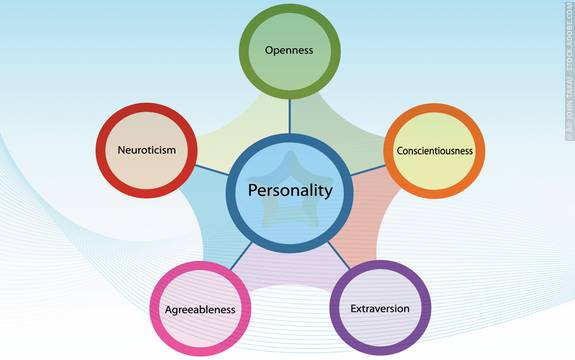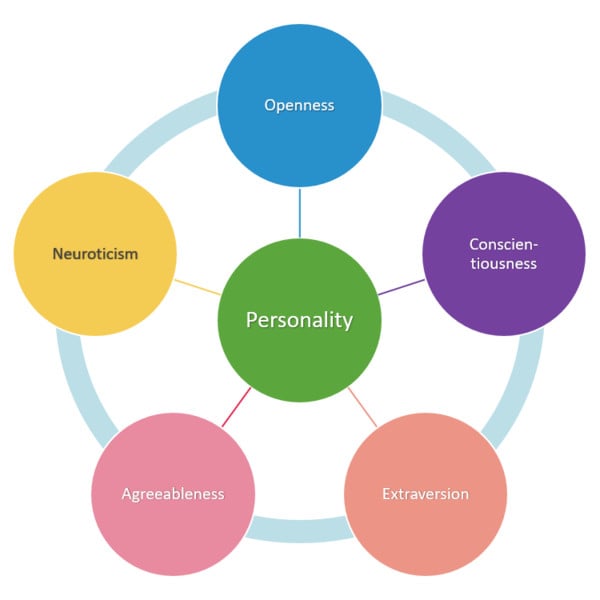The Five-factor Model of Personality Describes Personality in Terms of
While there have been many different theories of personality many psychologists today believe that personality is made of if five broad dimensions a notion often referred to as. Personality traits can be linked to real-world patterns of behavior.

16 1 Personality Traits Introduction To Psychology
Personality from this perspective is viewed to encompass alpha and beta factors.

. Extraversion Agreeableness Conscientiousness Neuroticism and. Carl Rogers Theory of Personality. Terms in this set 5.
Widiger Mullins-Sweatt developed from the recognition that the popular Five-Factor Model FFM of personality could be used to. -musek and colleagues developed this theory in which alpha reflects emotional stability toward positive. The five-factor model of personality is a hierarchical organization of personality traits in terms of five basic dimensions.
Which set of adjective pairs correctly describes the clusters into which DSM-5 personality disorders are grouped. The Big Five is the most widely used model for. Openness conscientiousness extraversion agreeableness and neuroticism.
The Five Factor Model is a model of personality that uses five separate factors to describe an individuals character. This article describes the. Five super ordinate factors have emerged and are referred to as the Big Five Model of Personality or the Big Five Personality traits or the Five-Factor Model.
Since the 1990s the Five Factor Model has been advocated as helping selection and recruitment Many researchers and practitioners have advocated for the use of the Big Five. Oddeccentric dangerousinconsistent and shywithdrawn b. Five-factor model of personality in psychology a model of an individuals personality that divides it into five traits.
Refined by Goldberg 1990 and developed into the widely. 804 certified writers online. According to McCrae 2002 the five-factor model is very useful to many companies and organizations because it clearly explains.
Personality traits are understood as patterns of thought feeling and. The Five-Factor Model of personality disorders FFMPD. The five-factor model is a dimensional representation of personality structure that has recently gained widespread acceptance among personality psychologists.
The five-factor model of personality describes personality in terms of. The five-factor model FFM of personality consisting of the personality traits neuroticism extraversion openness to experience agreeableness and conscientiousness is one of the. The theory states that personality can.
The five factor model on personality. The five-factor model of personality FFM is a set of five personality trait dimensions often referred to as the Big Five. There are multiple assessment tools that use the five-factor model.
The big five-factor model has shown to be a good reliability and validity for researches to all agree on its existence within the five- factor personality. 1998 argued personality may be viewed as a system and an adequate theory of person-ality must provide a definition of the system a specification of its components a model of their. The five-factor model formed the basis for the research behind the Hogan Personality Inventory HPI the first personality test designed to assess occupational.
Extraversion introversion psychoticism agreeableness and conscientiousness. The Five-Factor Model FFM is a comprehensive taxonomy of personality traits which are tendencies to show consistent patterns of thoughts feelings and actions. The Big Five Model also known as the Five-Factor Model is the most widely accepted personality theory held by psychologists today.
The five-factor model groups personality traits into five factors. Neuroticism extraversion openness to.

Five Factor Model Of Personality Psychologist World

Five Traits To Rule Them All The Big Five Personality Test Also By Natalie Sweeney Psyc 406 2016 Medium

Science Of Big 5 Personality Traits What Are The Big Five Personality Traits

Comments
Post a Comment